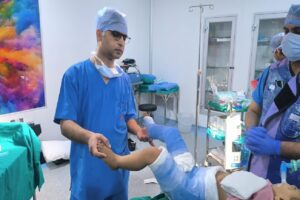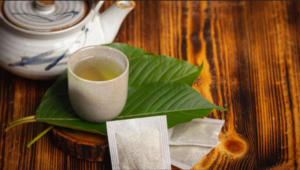Waking up and pain management

After the operation, your child stays between 30 minutes and two hours in the recovery room. This stay is compulsory. The recovery room team monitors your child’s return to consciousness and gives him the necessary medication to relieve him.
It is common to have nausea or vomiting for hours after waking up. There are medications to reduce these unpleasant effects.
If the awakening takes place in an intensive care or intensive care unit, your child may still be assisted by a device to help him breathe , that is to say “intubated”, so he will not be able to talk to you right away.
ain management
Pain is a predictable consequence of the operation, even if its duration and intensity vary according to the interventions and according to the children. This is why the anesthetist sets up a painkiller treatment as soon as you wake up, in relay of that of anesthesia, and regularly assesses its effectiveness.
In small children, pain assessment is done by observing behavior to look for signs that may mean pain. The result of this observation gives a pain score which is regularly noted in the file.
Do not hesitate to inquire about how your child fell asleep and woke up. Was he calm, anxious, agitated, or angry? Despite the best efforts of caregivers, this can happen. It is important that you know this, to console your child if necessary and that he does not remain on any difficult unspoken memory: this could complicate his future relations with health professionals.
If your child is in pain, if he asks for help and does not seem very relieved, do not hesitate to ask the healthcare team to assess his pain and consider solutions, medicinal or not.
Note that for the return home, if the trip is planned by car, two adults must be present (one person driving and the other staying with the child). It is strongly advised not to take public transport with a child who has just had surgery.
In the evening and the night following the outing, it is necessary to provide for the presence with the child of an adult capable of communicating by telephone with the emergency services or emergencies, in the event of complications.
In case of classic hospitalization
The date and the organization of the discharge depend on the type of operation and the postoperative course.
In all cases
Let your child know if a check-up is planned at the hospital. Often children think that everything is over on the day of discharge, and that they will no longer need to go to the hospital.
Back at home
During his recovery, your child will need to be surrounded by care and comfort. The care team will give you all the instructions to monitor and accompany him as best as possible (the delivery of a written document is a plus to remember everything), in particular to relieve him if pain is foreseeable.
This is rare, but hospitalization at home (HAD) may be offered to you in certain cases (monitoring of treatment for certain pathologies, complex care, therapeutic education, etc.).
Relieve your child’s pain
Obtain the painkillers (analgesics) prescribed during the anesthesia consultation in advance so that you can begin treatment as soon as you return home. Indeed, to effectively relieve the child, it is important to respect the medical prescription (quantity and frequency) without waiting for him to have pain again.
Some possible consequences of the operation
In the weeks following the operation, many children may exhibit unusual behavior. You may notice that your child clings to you more than usual, wakes up at night, gets angry or fears people he doesn’t know… All of this will gradually get better.
Encourage him:
to play the doctor or the operation (panoply of doctor, surgeon or nurse),
to talk about their hospitalization through publications (see SPARADRAP guides or our reading advice below)
or to draw what he has experienced (hospitalization, operation, care, visits, caregivers…).
Your child will thus gradually get rid of the fears accumulated during hospitalization. Especially if you tell him he was brave and coped with the situation.
Special COVID Information
Today, because of the covid-19 epidemic, the organization at the hospital had to change to prevent people carrying the coronavirus from transmitting it to others during their hospitalization. The measures taken vary according to the services: the team that welcomes you will give you all the necessary information.
Here are the main measures that can be put in place:
Barrier gestures
All people in the hospital respect barrier gestures . Wearing a mask is compulsory for the person accompanying the child, and sometimes for the child himself.
The presence of relatives
Only one person can accompany the child during the different stages of his stay: in consultation, the day of hospitalization, to go to the operating room, in the recovery room, in the hospital department…
Screening test
Before the operation, we find out if the child is a carrier of the coronavirus . Some teams systematically have a screening test done before any operation, others ask if the child shows signs of the disease (fever, cough, difficulty breathing, loss of taste and smell, etc.) or if he was recently in contact with a person sick with Cov






